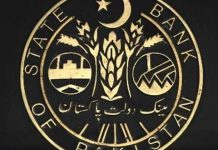The Pakistan Army has had enough. For a very long time the country’s military leadership has been sharing power with their civilian counterparts. Over time this complicated relationship has arrived at a general understanding by which the military is allowed to independently run its own affairs while having a sizable influence on Pakistan’s foreign policy. In exchange, civilian setups have every now and then been allowed to run the economy and policy in areas such as health, education, and other service sectors with relative independence.
There is much to be said simply in terms of historical fact about how we got here. But let us set that aside for the sake of ease, security and understanding. Let us forget matters of what should be and what shouldn’t be. Of right and wrong, and of constitutional and unconstitutional and instead focus on realities. What we do know is that even in periods where military dictators were directly exercising executive power they largely relied on technocrats, bankers, and economists to manage the country’s finances for them.
That is until now.
Over the past six months the military leadership has played a key role in trying to stabilise the country’s ailing economy. And there is nothing more indicative of this newfound interest in financial management than the Special Investment Facilitation Council (SIFC) that has been designed, spearheaded, and launched by the country’s military leadership.
What exactly does the SIFC do? It is supposed to be a council composed of civil and military leadership that operates almost like a second, empowered, commerce and investment ministry. The council provides opportunities and easy terms of investment and cuts through the inefficiencies with a vast array of powers. It is, essentially, a way to ensure consistent economic and business policies for foreign and domestic investors.

You see, the government of Pakistan has developed a bit of a bad reputation as a business partner. Foreign investors in particular have regularly been left scratching their heads over the legal and regulatory quagmires they have to navigate through to invest in Pakistan. On top of this, inconsistent policies and constant political upheaval makes the country a highly risky place to park your money.
With the SIFC, investors are supposed to know that any dealings with the council take place in a realm outside politics and vested interests. So have the investors been biting? While nothing concrete has come to fruition yet, the council is quite confident that investments worth tens of billions of dollars could be coming in any minute now through the auspices of the recently Christened council.
But what exactly are these investors putting their money into? The SIFC, it seems, has picked two key avenues for finding foreign investment. The first is natural resources such as mines and minerals. The other is agriculture. Now, with mining the matter is harder to achieve but a bit simpler. Investors can come in, assess the potential of a particular mining project, buy the lease and get cracking. In the case of agriculture, it is a bit different.
Pakistan is solidly an agrarian economy. That means in the case of agriculture, the SIFC is not just looking to find investors but also solve one of the biggest problems plaguing Pakistan at the moment — food security. The council’s plan is to use uncultivated land owned by the government and make it cultivable through corporate farming. To do this, the council is partnering with all of the provincial governments with the initial projects kicking off in the Punjab. The council and their enthusiastic partners claim this will bolster the country’s food production. Critics claim that the move could end up creating a new system of corporate feudalism and do little to alleviate rural poverty. So what is the reality? We start, as all good stories do, at the beginning.
What is corporate farming and why on earth are we suddenly hearing about it?
Corporate farming is a pretty vague term. Corporate Agriculture Farming is a practice usually undertaken by large companies looking to enter the agricultural sector. They purchase or lease land on a grand scale and then develop farms for experimentation and sometimes to grow products that they might need for their other businesses. A manufacturer of cornflakes, for example, might want to grow corn.
The idea itself is nothing new for Pakistan. In fact, former President Pervez Musharraf during his time in office had drawn up a plan for the lease of over 2000 acres of undeveloped land to the Chinese for Corporate Agricultural Farming. In 2009, building off this original plan, the government proposed to offer about 700,000 acres of land in Cholistan to potential investors probably from Saudi Arabia and the UAE.
The term corporate farming caught wind in March this year when a letter surfaced. In the letter, the military’s land directorate was asking the Punjab Government to hand over 42,000 acres of land for the development of corporate farming in Bhakkar, Khushab, and Sahiwal. This raised some eyebrows as a number of people wondered what the military had to do with using unused land of the provincial government for farming. Concerns were exacerbated when it was discovered that the transfer of 42,000 acres that was mentioned in the letter was only the first part of an overall request for over 10 lakh acres of government land.
Now remember, this surfaced back in March 2023. The SIFC was not formed until the 17th of June later that year. Clearly the idea of corporate farming has been one that the military has been interested in for a while. Even back then, the armed forces clarified that they would only play the role of facilitator in this and not reap any benefits from the project. At least 40 percent of the revenue generated from the cultivation would go to the Punjab government, 20 percent would be spent on modern research and development in the agriculture sector, while the remaining would be used for the succeeding crops and expansion of the project. The military’s land directorate was conducting the project in partnership with the Punjab government and the other private parties interested in corporate farming.
The idea was that the government owns land that nobody is using. The army basically extended an offer to the government of Punjab to develop this land, auction it off to a private party on lease, have them come in and use progressive farming techniques to grow crops on it and increase the country’s overall agricultural output. The profits would be split three ways with most of it being reinvested in the farms.
The matter, however, was taken to the Lahore High Court (LHC). What followed were tricky arguments where petitioners claimed that a caretaker government did not possess the mandate to enter into such an agreement and that the armed forces were going beyond their constitutional jurisdiction as well. You can read more about the entire fiasco here but very briefly put, the LHC struck down the transfer of the lease to the armed forces on the 1st of April 2023.
The next two months went by quietly. Then in June 2023, then Prime Minister Shehbaz Sharif announced the formation of the SIFC. Underneath this council, foreign investors would be facilitated and given preferential treatment to make Pakistan an easier environment to conduct business in. Within days the PM was posing with the military’s top leadership and announced the “Green Pakistan Initiative” (GPI) with the Army Chief by his side. The plan was for the SIFC to be the vehicle that would bring tens of billions of dollars worth of investment into Pakistan. A big part of this, which was advertised in the early days, was through mining minerals and other natural resources. However there was always a plan to also bolster agriculture through corporate farming.

The SIFC would create plans that would allow corporate farming models along the same lines that the army had tried to do with the Punjab government. The council quickly began announcing projects under the GPI. This included opportunities to invest in livestock farms with over 20,000 animals, camel farms with a herd of over 10,000, and feedlot farms with over 30,000 animals. Other than livestock, investors also had the opportunity to start corporate farming in Cholistan on an area of 50,000 acres.
On the 17th of July 2023, exactly a month after the establishment of the SIFC, the Punjab Government also won an appeal in the LHC which ended up reversing the court’s decision to transfer the 42,000 acres of land in Punjab. It has still not become clear if the project in Punjab for corporate farming will now possibly be managed by the SIFC as well or not but it means that corporate farming is about to kick off in the country on a very large scale. So how exactly does it change Pakistan’s agricultural landscape?
Enter the investors
This is where things get really interesting. As has already been explained, the SIFC’s vision is to acquire land from provincial governments that is not being used and prepare it for cultivation. So for example the SIFC plans to prepare millions of acres in Cholistan by providing basic infrastructure for water and electricity as well as manpower to potential investors that might want to cultivate the land. Their main goal is to look for foreign investors that can bring in foreign exchange, and to that end their immediate goal is to use 15 lakh acres of such land for corporate farming and modernise an additional 50 lakh acres that are already being cultivated.
“We have estimated about $5-6 billion [investment from Gulf nations] for initial three to five years,” says Major General (r) Tahir Aslam speaking to the media. The General is the CEO of FonGrow, which is a company set up under the umbrella of the Fauji Foundation in 2022 meant to promote the interests of corporate farming in Pakistan. “We are engaging with several Saudi companies like Al-Dahara, Saleh and Al-Khorayef to attract investment in the corporate farming sector,” he said without elaborating on what stage the discussions had gone to.
FonGrow is the company that is managing initiatives under agriculture being undertaken by the SIFC. Of course, the problem is that there has been no solid commitment from a foreign investor so far. Currently, the SIFC is offering a number of perks to investors that put their money in corporate farming. Foreign investors are allowed to own 100% equity in these projects and are also being given tax breaks of up to 25% on these projects. Despite this, interest has been passing.
Where it has come from however is domestic companies. Profit has been informed by reliable authorities that Fatima Fertilisers, Unity Foods, Roshan Packages, and also some large conglomerates such as possibly Descon are stepping up to the plate and investing in corporate farming.
“As things stand, a number of companies have entered into MoUs with the SIFC even if not in final contracts. Everything is being managed through the FonGrow company they have founded. It seems that foreign investors are a little harder to convince right now but we are hearing good news is right around the corner,” says a representative of one of the corporates, which is getting into corporate farming through the SIFC.
As he explains it, around 3 lakh acres of land has already been set aside for local companies to set up their farms on. The cost of setting up on this land, most of which is in Cholistan, is around Rs 5 lakhs per acre. This means that if the SIFC has managed to lease out around 3 lakh acres of land, that is an injection of around Rs 150 billion into corporate farming in Pakistan.
According to the SIFC’s own estimations, this business model demonstrates the feasibility of corporate farming on a large scale culturable wasteland in Cholistan with a front-load cost of Rs. 37.55 billion to cultivate 50,000 acres. This estimate is a bit higher than the one provided by but is within the same Rs 150-200 billion ballpark range. The problem here is that all of this investment is in rupees.
Currently around 3 lakh acres are being given to selected companies to start work on corporate farming but the demand is much higher than they anticipated. In reality there might actually be a demand for around 7-8 lakh acres right now, according to one source familiar with the matter.
But why such high interest?
On top of this, the companies that are going for this all have something or the other to do with the agriculture business. One such company that is entering corporate farming is Fatima Fertilisers. One of Pakistan’s largest fertiliser companies, Fatima has a clear interest in wanting a corporate farm. Pakistan already has excess capacity that is not being utilised in the fertiliser industry and if unused land was to start being used there would be a higher demand for fertiliser.
Unity Foods has a similar interest since they could then grow a lot of their own raw materials. Similarly Roshan Packaging would also diversify into food packaging and enter the agriculture supply chain along with corporate farming. This means companies like this can synergise their businesses by having the ability to lease their own farms.
“We have no issue of rupee capital availability for our project because ultimately it will bring returns to Fauji Foundation,” says General Tahir. “There is a small challenge that we are facing basically, which is of foreign exchange because the irrigation systems and the tractors and harvesters that we have to import, they need foreign exchange.”
The concerning bits
This is what we have up until this point. Pakistan’s armed forces have been interested in corporate farming as a concept for some time now. Since at least 2021 they have been making attempts to acquire government land as part of a partnership and cultivate this land that is not being used. Under the banner of the SIFC, this vision is materialising. The Fauji Foundation has created a company to help manage corporate farming projects and while foreign investors are still deciding, plenty of local companies are signing MoUs.
But why does it matter so much? Mostly because Pakistan is at a crucial crossroads when it comes to agriculture. The current situation is such that the country’s population is growing at a higher rate than the rate at which food production is growing. In an international ranking of the Global Hunger Index (GHI) this year, the country ranked 92 out of 116 nations, with its hunger categorised as ‘serious.’ Pakistan currently faces a scenario in which it is largely food sufficient but not food secure.
Despite Pakistan being ranked at 8th in producing wheat, 10th in rice, 5th in sugarcane, and 4th in milk production, a 2019 report of the State Bank of Pakistan (SBP) showed that nearly 37% of households in Pakistan are food insecure. In the three years since the SBP’s report, matters have only worsened. Food price inflation in Pakistan has been in double digits since August 2019. The cost of food has been 10.4-19.5% higher than the previous year in urban areas and 12.6-23.8% in rural areas, according to figures published by the Pakistan Bureau of Statistics.
And these are statistics from before the past year in which the country has been hit by wave after wave of inflationary pressure. To put this into perspective, food Inflation in Pakistan averaged 10.45 percent from 2011 until 2023, reaching an all time high of 48.65 percent in May of 2023.
The SIFC’s proposed solution to this is to increase the amount of land we have under yield. Pakistan has a geographic area of 79 million hectares (1H=2.47acres). Out of that, a mere 15.7 million hectares are cultivated. Besides, more than 8.2 million hectares are classified as culturable waste (uncultivated farm area that is fit for cultivation). But is it a viable solution?
The confusing bits
It sounds like a pretty neat solution. Pakistan doesn’t have enough food. The population is growing which means the demand for food is growing as well. So what do you do? Lo and behold the government has lots of free land that is not being used but is cultivable. You take that land, start developing it, lease it out to third parties that will grow crops on it and then the food supply in Pakistan will increase. If you get enough of an area cultivable the difference will be big enough that you can fulfil your own needs and even export the leftovers.
Right?
It is a little more complicated than that. For starters, a lot of the state owned land being leased out for 30 years or more, in some cases, is land that could be protected forest area. Since no clear demarcation has been made of what lands are going to be part of this, there is still very little clarity. Even in areas we know such as the Cholistan desert, there are a lot of questions that can be raised. After all, it is very easy to simply draw a circle around Cholistan and say it is a wasteland that can be better used but it is a biodiverse ecosystem that hosts many species and indigenous communities. And that also brings us to the bigger question in Pakistan pursuing corporate farming on such a massive scale.
Who will work the land? Pakistan’s land owning patterns are abysmally inequitable. With an average farm size of just over 2 hectares (5 acres), over 90% of landowners in Pakistan owning farmland of less than 12.5 acres; and only 3% of landowners having land-ownings of more than 25 acres; the agricultural landscape is dominated by subsistence farming, and a small number of absentee large landowners, all dealing with aarthis or middlemen.
“The idea of Corporate Farming or Large Scale Contract Farming has been around for a while, and the government says it is one of the primary potential avenues for investment in the country,” says former KP Finance Minister Taimur Jhagra. According to him, if agriculture improves through corporate farming it can be a great avenue of export particularly to the Gulf countries which have bread basket problems.
“As a result of middle men and inefficient land divisions our agriculture sector continues to underdeliver because of a vicious cycle of poor agricultural practices, unavailability of technology and finances, poor inputs, low investment, low yields, low productivity, poor quality and poor profitability. This cycle needs to be broken at a scale disruptive enough to make a difference, and while controversial, corporate farming may be one disruptive way of challenging these problems from the demand side,” he adds.
“In fact, perhaps in addition to the GCC countries and China, it is worth pursuing companies like Coke, Pepsi, Nestle, and chains such as Carrefour and Metro, to see if they are willing to invest more in the sourcing of more local ingredients for their products, investing in value addition, and creating value chain partnerships with farmers and markets.”
Essentially, you have a situation where there will be labour shortages and on top of that, even if enough farmers are convinced to relocate, they will not know how to work this new land. The SIFC is encouraging progressive farming techniques for corporate farming. They have asked their partners to use the latest seeds, mechanise the farms to at least a certain extent, use drip irrigation, and many other modern methods and techniques. They are developing applications and other predictive technologies to ensure maximum yield on these lands. Partners have to conduct soil and water studies before planting and report back to the SIFC with the results. And while all of these measures are positive signs, there are serious questions about who will make it happen on the ground.
On top of this, corporate farming will do very little to alleviate rural poverty. According to Syed Muhammad Ali, an academic and author, the probability of military-operated corporate farms being able to help address rural poverty remains limited at best. “While land ownership patterns vary significantly across different districts, a lingering cause of rural destitution is highly skewed land ownership patterns,” he writes.
“The idea of external investors using finite land and scarce water resources to grow crops for export when the country itself is facing water scarcity and food insecurity remains contentious. Rural areas in Pakistan are much poorer than its cities, and recent climate-induced stresses such as water scarcity and increasingly severe and frequent floods are making matters worse. While land ownership patterns vary significantly across different districts, a lingering cause of rural destitution is highly skewed land ownership patterns.”
A double edged sword
This is really what it boils down to. Pakistan stands in the midst of complete economic peril. One can make many arguments about where and when the rot set in. Currently, the situation is being handled by a group of people that can very broadly be defined as establishment.
There is much to be said simply in terms of historical fact about how we got here. This teetering understanding between civil and military authority first came about in the 1990s when a faltering democracy desperately tried to take root in Pakistan. It can be traced back through a history of multiple coups, war, and political engineering. But what matters at the moment is that major initiatives are being taken and it is still worth looking at what the cost and benefit will be to these.
In the case of corporate farming, Pakistan’s agricultural output can very well increase. But will it result in a net improvement for the most vulnerable segments of society? Or will it instead create a new feudal class backed by the powers of progressive, modern, mechanised farming? Only time will tell. The current pattern being followed of awarding lands and leasing them out to be developed comes from a very colonial mindset, and it isn’t particularly difficult to imagine which way the cookie will crumble.


























To cut the very, very, very long story (you have written) short, there is no justification for such an arrangement called corporate farming. I do not know who is trying to fool whom. It is most unfortunate that the coalition government of PDM allowed all this to happen. As a patriotic Pakistani, I would love to see my country with a stable economy but this is not the way to do things. Not at all.
To cut a question of economy from politics is an enigma given the fact that a governance model on top essentially emerges out of some political theory & debate. We are republic borne out of a civil struggle of independence so taking will of public out of equation concerning all matters of public significance defies the foundation of country.
It is a very good idea and it is suggested that investment be allowed for resident and overseas
Pakistanis and no UAE or Saudi or any foreign
national be allowed Insha Allah you will be getting
investment in Dollars by overseas Pakistanis
people who work get benefit it is necessary to work
hard for betterment e optimistic Allah shall pour
Allah’s blessings
Right time to invest in Corporate Farming.
In the case of corporate farming, Pakistan’s agricultural output can very well increase and Great investment for next generation.
Pakistan stands in the midst of complete economic peril. One can make many arguments about where and when the rot set in.
Currently the annual domestic Urea Fertiliser production capacity in Pakistan is around 6.5 millions tons, which includes 2 fertilizer plants which uses RLNG. The annual domestic consumption is also 6 to 6.5 million tons. Further no new Urea Fertilizer plants is in line. From where they will get the Urea Fertilizer for cultivation on new land 50 acres or what ever. The corporate farming under SIFC is more like ” Sheikh Chili Ka Khayali Palao”.
Read corporate farming history in Africa they first time corporate foreign companies in invest in Africa
In short not a good for Pakistan and Pakistani
Great illustration and timely response. Corporate farming will be killing to nation